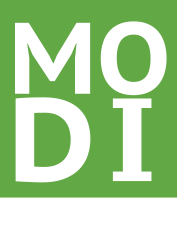Whether you’re running a business or changing careers, you’ve likely been to at least one networking event this year. And like any seasoned attendee, you found yourself walking away with a handful of new contacts and a pile of paper business cards.
But in a world that’s going digital, are printed cards still relevant? Will virtual alternatives, like mobile apps and nameplate websites, replace or complement their paper counterparts?
Here’s a closer look at some of the benefits and drawbacks of paper and digital business cards.
Paper Business Cards
Benefit: Printed business cards give you an opportunity to communicate your brand with people you’d like to reconnect with in the future, starting with the first impression. In the age of visual content, these cards are a great visual reminder of who you are and what your business is all about.
Drawback: Did you recently update your phone number, email address, or website address? Are you switching up your business name or undergoing a full-scale rebranding? Any changes made to the contact information provided on paper business cards calls for a new batch to be printed up.
Benefit: Paper business cards come in handy at conferences, trade shows, professional lunches, and other in-person networking events. When someone asks for your card, it means they want a tangible reminder of who you are and how you met. Jotting a quick note on your printed card will help them recall this information when following up with you later.
Drawback: Quantities are finite, as you can only pass out as many cards as you bring. You need to make sure you give yourself plenty of time to get them printed and shipped them to you when you’re running low.
Digital Business Cards
Benefit: Mobile apps like SnapDat, One Card, and Handshake, allow you to share you electronic business card with other smartphone users. You can create a personalized virtual business card (vCard) and easily send your contact information to other app users via their username. These apps also allow you to email your vCard to non-app users.
Drawback: Digital business card sites are hot one day and gone the next. Contact sharing tools like Bump, Card.ly, BeamMe, and My Name is E were recently popular but are now defunct. Plus, not all mobile options are available for both iPhone and Android, and some free versions require both users to have the app installed on their smartphones. Other mobile apps only work if both parties are on the same WiFi network, which makes sharing information difficult if the connection is poor.
Benefit: Web-based business cards can help you maximize your online networking and generate opportunities to be found online. Professional nameplate websites, such as about.me, re.vu, icon.me, flavors.me, allow visitors to discover more about you, learn how to reach you, and see some of your best work. Once your page is created, you can link it to your email signature and social media profiles for extra exposure.
Drawback: Want to link your vCard to a custom domain? Some nameplate websites allow you to link the two, yet this is often considered a premium feature. While more affordable than designing a traditional website, you’ll be required to pay an annual fee (or essentially, rent the web design).
Better Together
Even in a tech-focused world, there is still a place for classic paper business cards. Here are a few easy ways you can merge your real world activities with your virtual presence.
- Add digital elements. Use a QR code on your printed card to make visiting your website or vCard a snap (literally). Mobile apps like JumpScan, Visualead, BeQRious can scan the code and send smartphone users directly to the link of your choice, such as your about page or professional profile.
- Leverage social media. Are you particularly active on a couple social media platforms? Include their icons and your handles on paper cards so new contacts will know where and how to connect with you socially.
- Manage contacts efficiently. Instead of logging all your new contacts by hand, use scanning programs like ScanBizCards and Evernote Hello to digitize paper business cards. These programs will import the information directly into your smartphone’s contacts list and save you the hassle of entering all that data manually.
Do you prefer using paper or digital business cards? Or do you use both in your networking strategy? Share your thoughts in the comments below.






